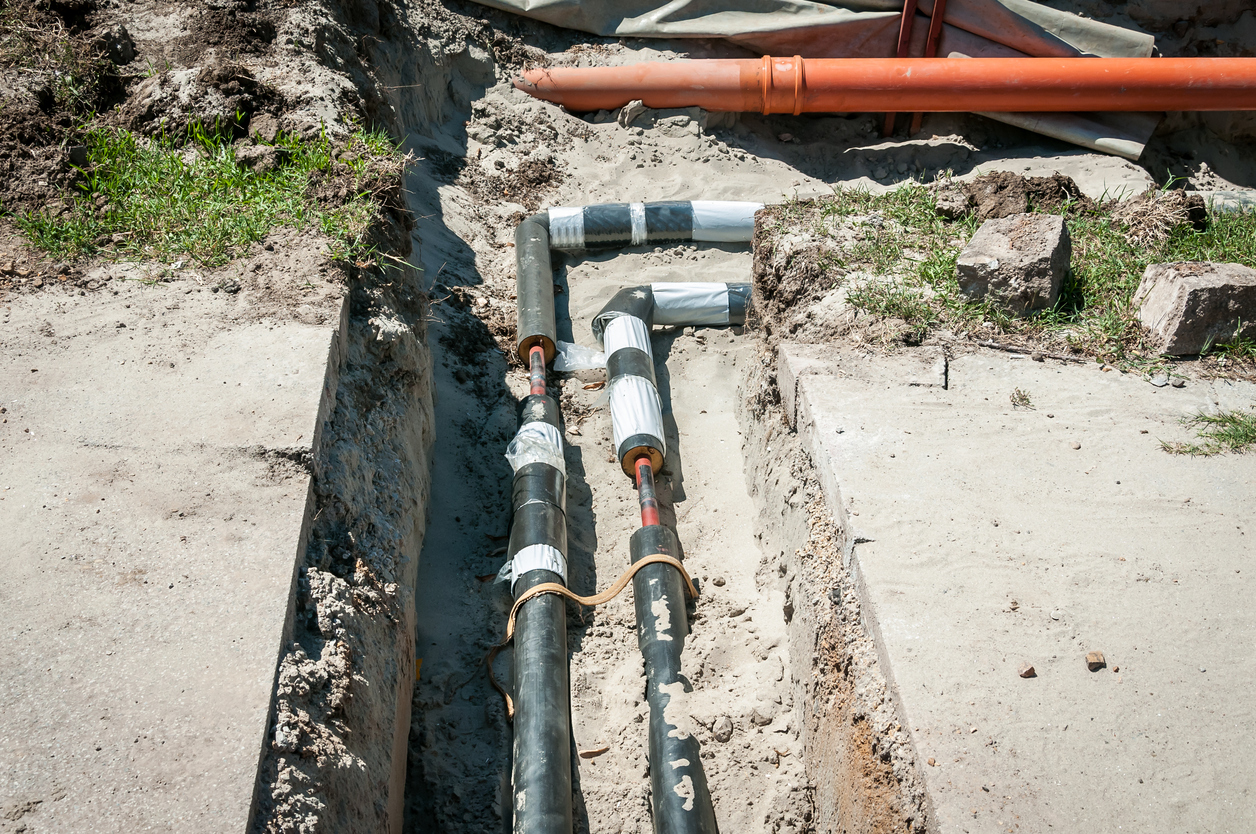Should You Buy Service Line Interruption Coverage?


Key Facts About Service Line Interruption
Did you recently receive a solicitation in the mail about protecting your home against service line damage? Are you wondering what in this world this is?
Here’s the short answer: Most homeowner’s policies cover damage caused by utility lines inside your home, such as gas, electricity, water, and cable. However, they do not cover the same lines once they exit your home and move underneath your property. Here’s where service line interruption coverage enters the picture.
We’ll outline all the essential details you need to know about service line interruption coverage, including what it protects against, what it doesn’t, how much it might cost, and what you can do to learn more.
What Does Service Line Interruption Protection Cover?
Most of us have multiple lines that run underneath our property and connect us to different essential services, including:
- Sewer
- Water
- Electrical wiring and power lines
- Gas lines
- Data or other communication wiring
Cumulatively, these are known as ‘service lines.’ And if damage occurs to one of them, there could be lots of labor involved during the repair process, including excavation, repairing the lines themselves, putting everything back into place, and then repairing additional outdoor property that might have been damaged in the process.
On top of this, you could incur additional living expenses if you’re forced to move out of your home while the repairs were ongoing.
Together, many of the third-party companies we researched cited average service line repair costs between about $2,600 and $5,000, depending on the specific line, the type of damage, and the extent of the damage.
Based on the nature of these lines, it might be easy to assume that it’s each provider’s responsibility to repair any damage that occurs. And even if you guessed correctly that these lines are your responsibility, you might be surprised to learn that homeowner’s insurance doesn’t cover them. Unfortunately, many homeowners don’t learn these details until it’s too late, and they’re left footing the bill for thousands in service line repairs.
Related: How Much Homeowners Insurance Do I Need?
As such, it might seem like a logical choice to pay a little now and avoid paying a lot if a loss occurs later. First, let’s take a look at a couple of examples of how service line interruption coverage works in the real world.
How Does Service Line Interruption Coverage Work?
Service line interruption coverage is typically offered one of two ways: either 1) by adding an endorsement to an existing homeowner’s policy, or 2) purchasing separate coverage from a third-party provider, similar to an extended home warranty. Either way, the specific coverage provided by your endorsement/policy can vary depending on the provider, as well as the tier you select.
With these details in mind, here are some of the most common service lines covered and the perils they’re insured against:
| Service Lines Covered | Perils Insured Against |
|
|
For example, imagine that you come home from a short vacation to find that your entire front yard is coated in an inch-thick layer of sewer water. After calling the necessary professionals and digging up your lawn, you learn that the roots from your 100-year old oak tree grew into your sewer main at the street, eventually causing it to rupture.
Under normal circumstances, this might not be covered by your homeowner’s policy. But with service line interruption coverage in place, you could potentially save thousands.
If you couldn’t live in your home while your sewer line was being repaired, your service line coverage might pick up these additional living expenses, too.
Are There Any Exclusions with Service Line Interruption Coverage?
Like any other personal lines insurance policy or endorsement, every provider will list exclusions related to the service line interruption coverage they offer, which can differ between companies. You’ll want to review your policy paperwork carefully to understand what they are, and how they might impact you if a loss occurs.
Related: The Five Parts of an Auto & Home Policy
With these details in mind, standard service line interruption coverage exclusions include:
- Septic systems
- Privately-owned wells might be covered, overall, but replacing their motors or pumps could be excluded
- Damaged caused during installation or servicing
- Service lines inside a building (your home or a detached structure), or run through a body of water
- Relocating pipes or wiring
How Much Does Service Line Interruption Coverage Cost?
The good news is that in most instances, service line interruption coverage won’t break the bank.
“Many homeowner’s insurance policies offer an endorsement that we can add for this coverage, which only costs $40 per year, or so,” advises Michael Steele, IHS Insurance Group’s principal owner. “This is usually much less than third-party service line coverage providers, who can charge $6 per month per service,” he adds.
Pro Tip: Keep in mind that most third-party providers offer different deductible options depending on your budget, which can significantly impact what you pay for the coverage.
How Can You Learn More About Service Line Interruption Coverage?
Based on everything we’ve covered, we can see that service line interruption coverage could prove invaluable under the right circumstances. Despite its potential importance, it doesn’t cost a whole lot, either.
If you can purchase the endorsement through your homeowner’s insurance company, this is usually the easiest and least expensive option. If not, and you choose to go through a third-party provider, make sure that you read what other online customers have to say about their experiences before handing over your hard-earned money.
Need a FREE Quote or have questions regarding Service Line Interruption Coverage? We have three convenient ways to reach us:
- If you prefer to talk to a licensed agent directly, please call (866) 480 5063.
- If you prefer to fill out a quick form and have an agent get back with you at your convenience, use the GET A FREE QUOTE.
- Lastly, for those that want an immediate quote, please click HERE.
We look forward to speaking with you today!
Recent Posts
Guardian Dental Plans
Guardian offers a variety of comprehensive plans that provide access to quality preventive dental care.…
Humana Dental Plans
Available in select states, Humana provides a variety of dental plans that give you access…
United Concordia Dental Plans
United Concordia offers a variety of affordable, research-driven dental plans that deliver quality dental care…
Aetna Dental Plans
Aetna Dental plans (offered by Aetna Life Insurance Company, a CVS Health company) fully cover…
Cigna Dental Insurance
Cigna’s dental plans (available with or without a Cigna medical plan) deliver 100 percent coverage…
MetLife Dental Insurance Plans
MetLife’s dental plans cover preventative oral care services like routine cleanings, as well as braces,…


